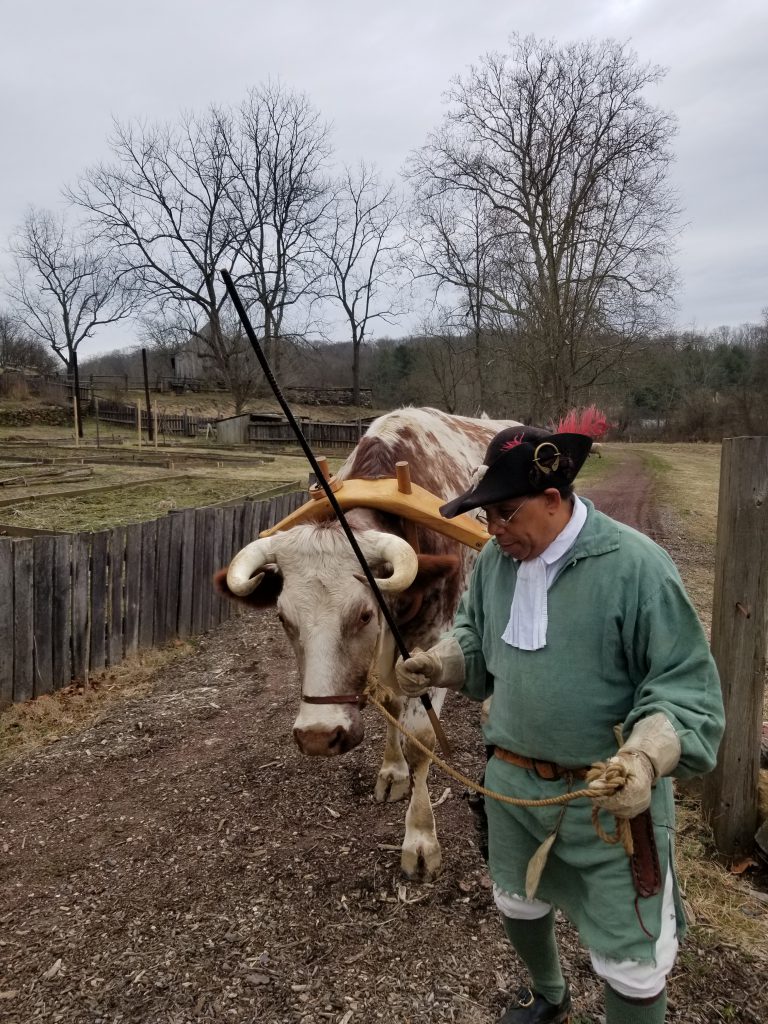THE CONESTOGA WAGON provided by Ben Rohrbeck
The Conestoga wagon was the workhorse of the American road for over 100 years beginning in the mid-18th century. It was the creation of the Dutch settlers of the Conestoga Valley in Lancaster County of Pennsylvania.
The first reference found regarding a wagon built in Conestoga was in James Logan’s (secretary to William Penn) notebook. On December 31, 1717 he wrote that a wagon was purchased from James Hendricks of Conestoga. Logan, in addition to being in the employ of William Penn, was a trader with the Indians. The Conestoga wagon most likely began as a farm wagon that was adapted for use on the rough hilly roads of eastern Pennsylvania. The wagon builder only used seasoned wood (air dried for three to four years) because it would not shrink and was harder than fresh cut lumber. These wagons came in various sizes and each was custom built for its owner, thus no two wagons were alike.
The wagons used to haul freight ranged in size from 14 to 26 feet overall. They could weigh up to 3,000 pounds and could carry up to eight tons of freight. Their boat-shaped body with slanted ends and a sag in the center prevented loads from shifting when going up and down hills. They generally had vermilion running gear, a Prussian blue wagon body, and a white canvas rain cover supported by pre-curved bows.
The wagons were equipped with a Jockey (feed) Box, a bucket to water the horses, a tool box for small repairs, a tar bucket to grease the wheels, a jack to remove a wheel, and wheel lock chains, used to prevent the rear wheels from turning. These would be used when descending a steep hill so the wagon didn’t run into and hurt the horses.
There were no seats in the wagon, as every pound of weight had to earn the freight company revenue. Thus the teamsters would walk along the side of the wagon, or ride the left wheel horse. Some wagons were equipped with a “lazy board”, a pull-out board located behind the front wheels on the left side of the wagon, to sit on. The teamster would direct the team by leather reins on the “lead horse”, the first horse on the left, or he might use commands, “haw” to tell the horse to turn left, or “gee” to go right.
Bells were usually mounted on an arched bail over the collar of each horse. Conestoga wagon usually had three teams of horses, with the lead team carrying 5 bells, the middle team, 4 bells, and the right wheel horse 3 bells. The left wheel horse wore no bells, since it was the horse that the driver might ride. The teamsters took great pride in their teams and the music produced by the bells. If a wagon got stuck in the muddy roadway, broke down, or required help, he was expected to give up his bells to the man providing aid. Thus the teamster would be disgraced if he arrived without his bells.
Freight wagons made 10-12 miles a day and took about a week to travel from Philadelphia to Lancaster. In the middle 1700’s, the principal roadway between these two cities is present day Conestoga Road, east of Paoli, old Route 30 to Downingtown, and Route 340 west of Downingtown.
It is said that these freight wagons were responsible for driving on the right side of a road in the United States, since the lead horse and driver were on the left of the wagon and stayed to the right to pass an approaching wagon. The saying “I’ll be there with bells on” originated with the teamsters, as did the word “stogy” for the large cigars they frequently smoked on their way.
REFERENCES:
The Landis Valley Farm Museum The Conestoga Area Historical Society The Journal of the Lancaster County Historical Society, Vol. 57, No. 5 The Columbia Encyclopedia, Sixth Edition www.rootsweb.com/-pacahs/wagon.htm www.bartby.com/65/co/Comestog.html www.forgedale.com/conestoga_wagon_bell.htm

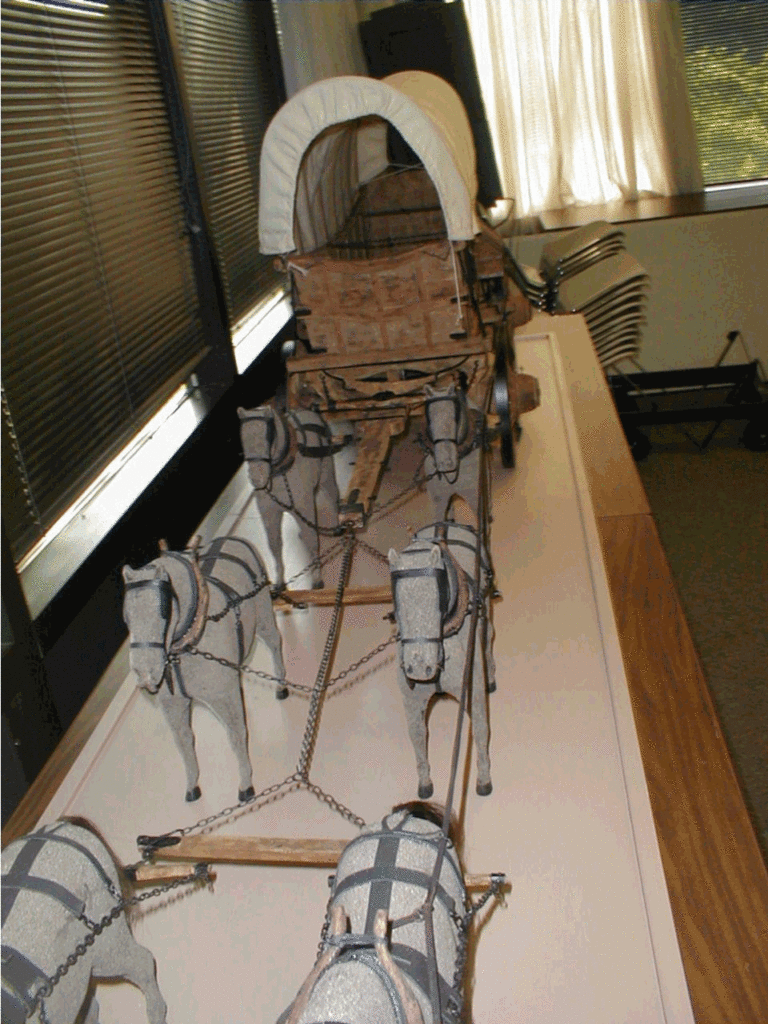
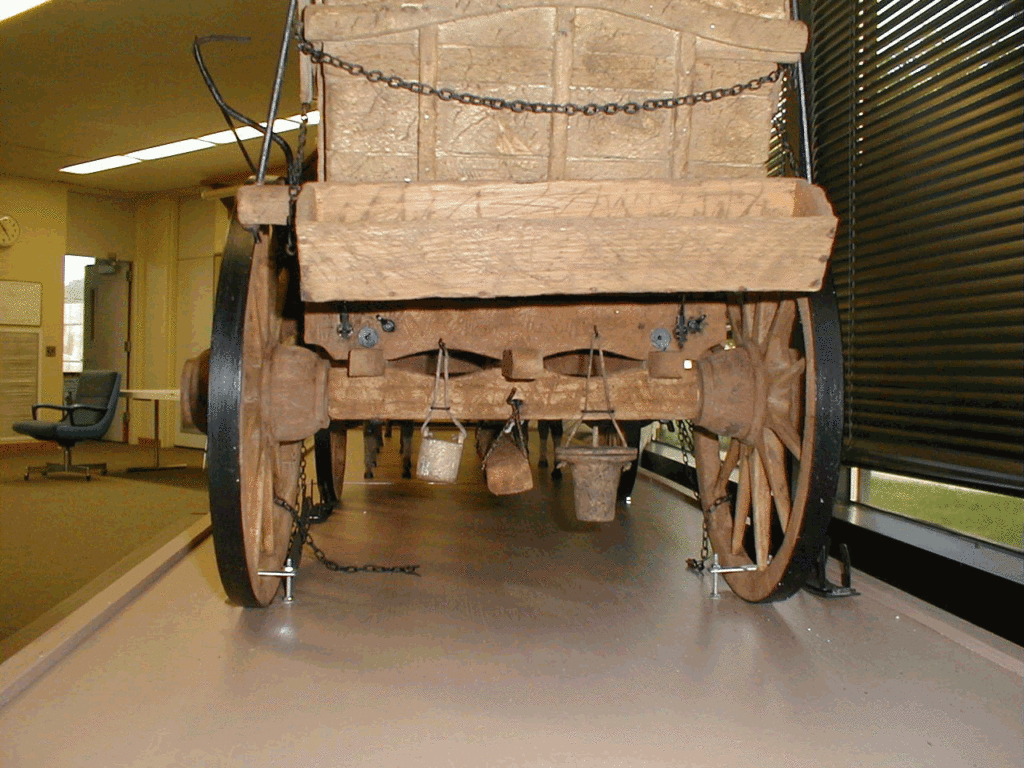
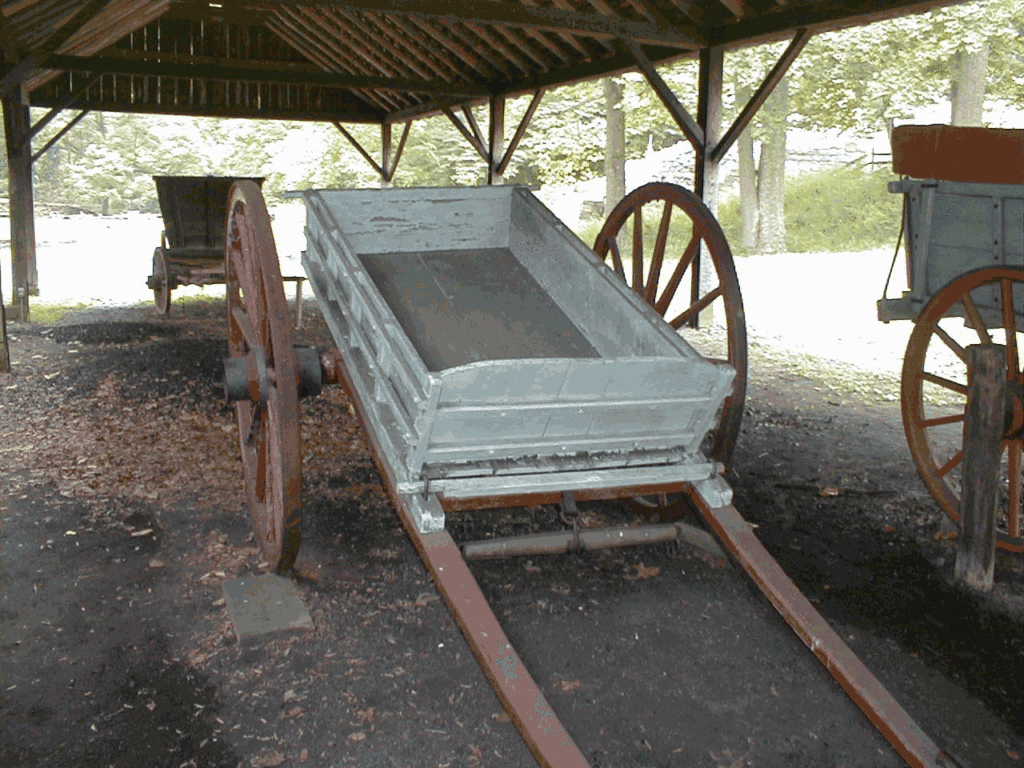
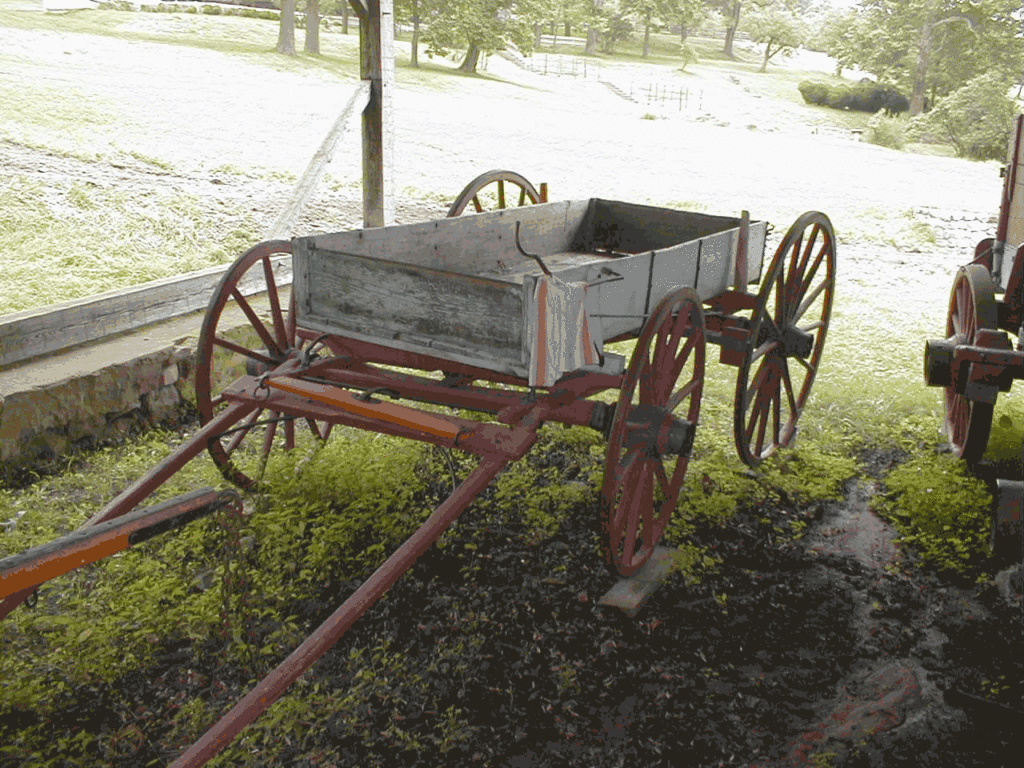
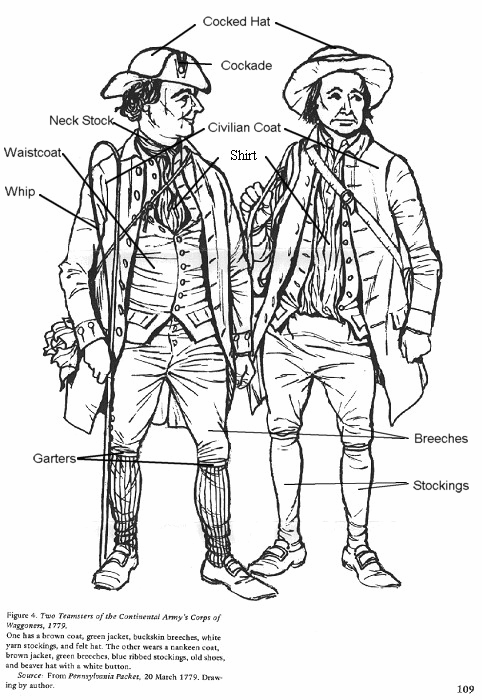
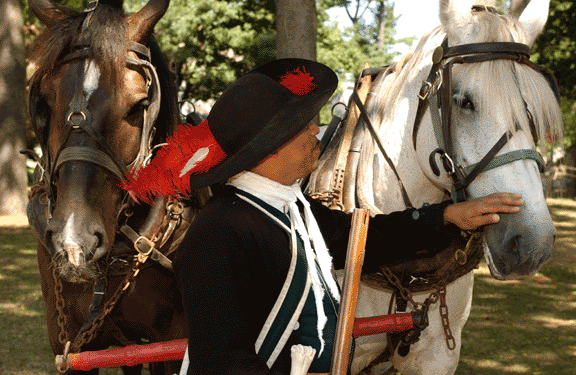
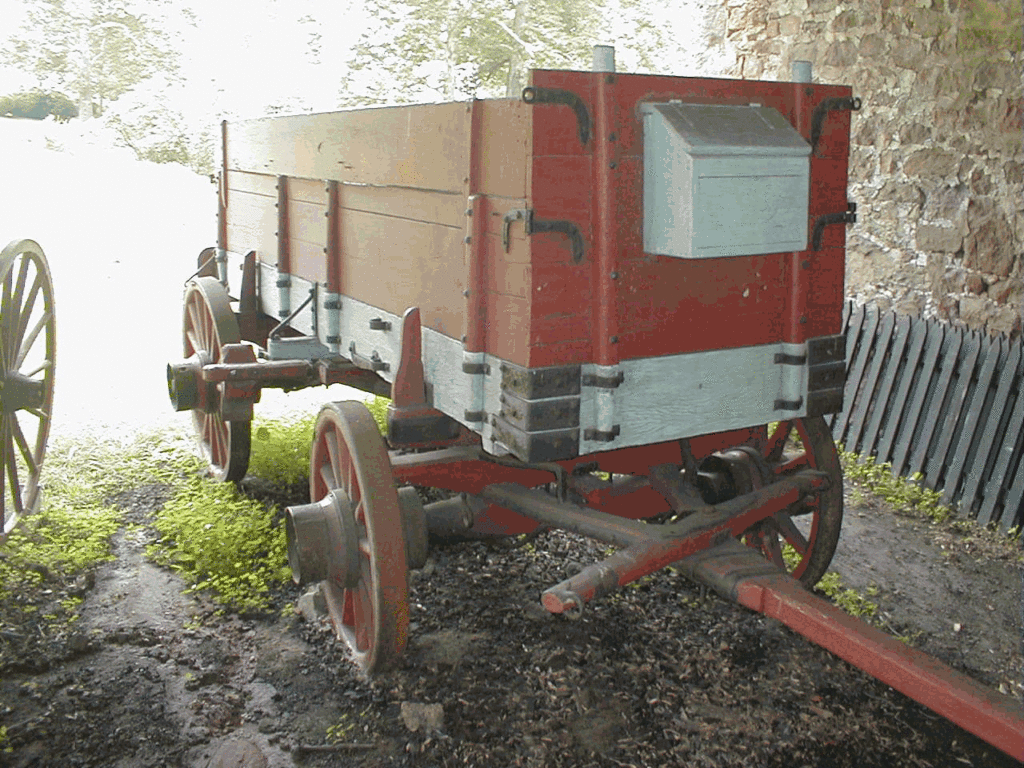
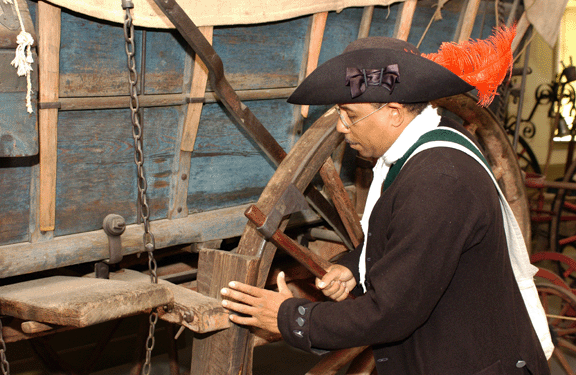
Teamster and Wagons by Noah Lewis
As a teamster it is my job to transport goods. I am called a teamster because I work with teams of horses. While I’m with Proctor’s Third Pennsylvania Artillery I transport the ammunition. (Gunpowder, cannon balls, whatever is needed to operate the cannons). Handling gunpowder is very dangerous. It is very unstable and can go off without warning. I have known of teamsters losing their lives because of unexpected explosions. When I am not actually firing the cannons, my work can also include transporting the cannons, loading the charges (making sure the right amount of gunpowder is put into the cloth bags which are put into the barrel of the cannon), and making sure all the ammunition boxes are well supplied. In short, without a teamster, the cannons do not fire! And yes, I am proud to be trusted with this task.
When I am not working as a patriot, I am much like your modern truck drivers. In fact, the union called the Teamsters originates with us. If you notice their symbol is a wagon wheel and two horses. You present day people have been greatly affected by us colonial teamsters. As an example, you drive your carriages on the right and steer from the left because we drove our wagon by waking on the left of the wagon and steered the front left horse. You tell me you do not drive carriages any more because you drive a car. I beg to differ. Why do you think you call a “car” a car? What is the first three letters of carriage? You still use terms we use for our wagons. Your two part wagons (tractor / trailer trucks) have a “fifth wheel”, which is the wide flat metal disk that the trailer sits on when it is being pulled. The metal post under the trailer, which fits in the middle of the fifth wheel, is called a “kingpin”. The kingpin makes it possible for a wagon or truck to bend so it can turn at a sharp angle. I can turn my wagon around in a very small area. The front wheels on many wagons are made small so they can go under the wagon. A “lynch pin” is a spike that goes into the hub to keep the wheel connected. The terms kingpin and lynch pin have even found their way in to our social use. A “kingpin of crime” is a person that everything centers around. A person who is a “lynch pin” is someone that keeps everything together.
Since we do not have the quick and far ways of communication that you have, one of the ways news spreads is by the traveling teamster. Who knows the contributions teamsters gave to the Revolution with their knowledge of areas, roads, and contacts. We teamsters are paid well for our skills. I can make from twenty to thirty pounds per month. Not bad! I need to have the following skills: a working knowledge of how a wagon is constructed, a wide understanding about the care of horses, a level of education that will allow me to read and write, ciphering skills or basic mathematic skills (would you want someone in charge of your goods that can neither read, write, or count?), and a good awareness of roads, towns, and the countryside. General Washington was taking soldiers out of the line to serve as teamsters. This proved disastrous in that the men resented it. Many horses become sick, lame, and died due to the inexperience of these men. General Washington issued orders to stop taking men from the lines and seek them from the civilians. As a civilian you could volunteer, the military could hire you, or they could take your horses and wagon and make you serve if it was thought to be an emergency.
There are sayings that spring up around the teamsters. For instance, my wife may tell me to “mind my ‘P’s and ‘Q’s,” or to “come back with my bells on.” What she means is when I stay at an inn or tavern, not to run up a high bill for the pints and quarts I might drink. In other words, do not drink up the profits! The bell comment refers to the bells I put on my horses. Since many people live off the road, they serve to let the neighborhood know I am in their area. Also, they let on coming wagons know I am coming down the road. Our roads are very narrow. If I hear the bells stop, it means the other wagon has found a place to pull over to let me pass. Lastly, if I should breakdown upon the road and I can not pay for what I need, I can use the bells as barter. Of course, if I come home without my bells my wife will know that something has happened.
